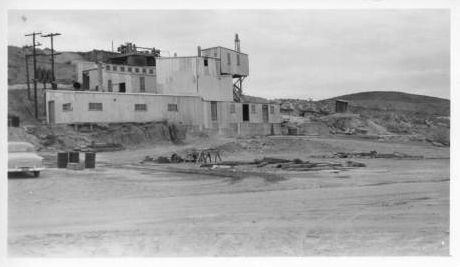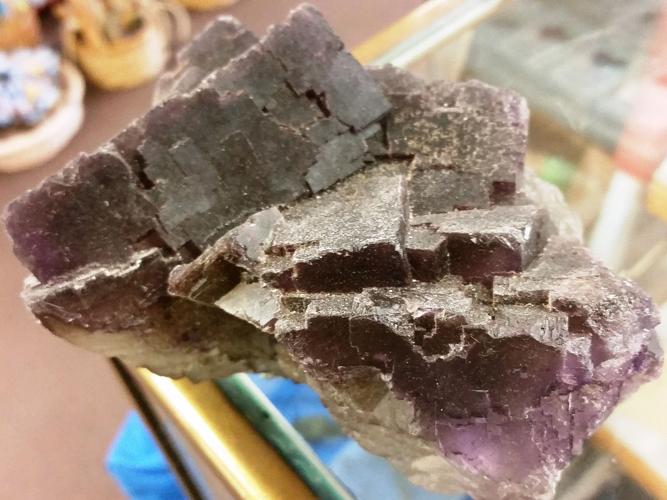Fluorspar is the commercial name for fluorite, calcium fluoride (CaF2), a mineral of fluorine, and the most reactive of all elements.
Fluorine, a pale yellow gas, proved deadly to early chemists because of its damaging qualities to the soft tissues of the respiratory tract.
Fluorite is derived from the Latin word “fluere” meaning “to flow” representing the mineral’s qualities of melting easily and supplying good flux, as noted by scientist and scholar Georgius Agricola in 1556. Agricola, known as the “father of mineralogy,” also claimed that fluorspar when used as an additive in molten metallic ores made them more liquid and easier to work with. It was used by the Greeks and Romans for drinking cups and ornamental slabs.
In 1670, Heinrich Schwanhard, a German glass cutter experimented with a mixture of fluorspar and acid which formed a substance with the properties of etching glass. The chemical reaction created a frosted image that was later used in stained glass in churches.
Fluorspar production worldwide increased during the late 19th century, satisfying the demands of the Industrial Era by promoting the fluidity of the slag while facilitating the passage of sulfur and phosphorus from the steel into the slag.
Fluorspar also aided the growth of the aluminum, ceramic and chemical industries during the world wars and the Korean conflict.
U.S. production of fluorspar began in 1910 with peak shipments of 237,000 tons in 1918 and 400,000 tons in 1944.
Fluorspar concentrates became more readily available with technological innovations including the froth flotation process begun in the 1920s contributing to the separation of fluorspar from galena, sphalerite and other minerals.
Fluorspar is a common gangue mineral that occurs in veins deposited by hydrothermal processes.
Arizona has several fluorspar deposits that have been commercially mined including those around Aguila, Benson, Castle Dome, Duncan, Sierrita Mountains, and Wickenburg. These operations have been small and sporadic.
The Fourth of July claims in the Ash Peak Mining district are in the southwestern foothills of the Mule Creek Mountains, an elevation of 4,600 feet about 20 miles northeast of Duncan.
The district is noted for producing $50,000 in silver between 1907 and 1933.
The Fourth of July Mine, its most notable fluorspar mine, was located by Robert T. Ellis of Duncan in 1937.
Averaging a four-man operation that worked the 150-foot-deep Ellis shaft, 500 feet of drifts, crosscuts and stopes along with two small open cuts made up the principal operation. Beset by rising costs of ore transport, the mine closed in 1942.
Fluorite from the mine was described as occurring in andesite porphyry country rock and a content averaging 65 percent calcium fluoride and over 25 percent silica. Additional qualities include an appearance as deep green to blue green with fissure veinlets up to 1 inch thick irregularly scattered in quartz. Some fluorite takes the appearance of cubes.
Two types of veins are found on the property including one composed of fluorspar with gangue minerals of calcite, manganese and iron oxides. The other referred to as the Riverview vein includes copper, gold and silver.
During its operation, the mine produced 2,600 tons of fluorspar averaging a car of fluorspar a week or a production averaging 150 tons per month. Duncan served as the nearest railhead for fluorspar transport to flotation mills at Lordsburg and Deming, New Mexico.
Ben Billingsley and Roy B. Wilson acquired the mine in 1952. The later was affiliated with the Arizona Eastern Fluorspar Corp. Depleted ore reserves necessitated the mine’s permanent closure soon after.
Nationwide, declining demand in the fluorspar-consuming industry in the 1970s was caused by a government ban on chlorofluorocarbons found in aerosol sprays and in refrigerants. Continued regulation costs of fluorinated gases due to government concerns pertaining to ozone layer depletion has since hindered production and subsequent mining efforts worldwide.





